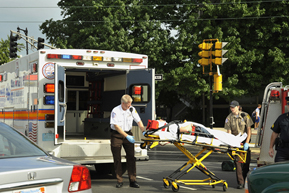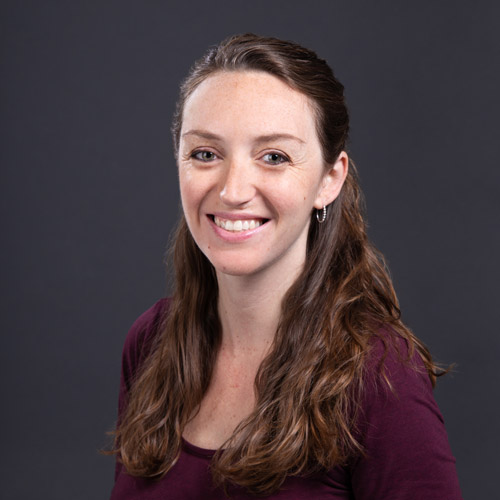Bike Accidents Prompt New Safety Plan
Bicycle committee to address education, resources, traffic flow

When Boston’s first bike lane opened on Commonwealth Avenue last August, the move was acclaimed both locally and nationally. Bicycling magazine, which had ranked Boston among the worst cities for biking, upgraded the city to its “Five for the Future” list of places launching cycling-friendly initiatives. But increased bicycle traffic over the past two months has led to more accidents on and near the BU campus — several involving students.
“The cars don’t necessarily see you, so it’s better to be safe and obey the traffic laws,” says Christine Loken-Kim, program administrator in the College of Arts and Sciences African-American Studies Program, who commutes to work on her bicycle. “When you bike, there is nothing protecting your body from the concrete, meaning you have to be aware that biking can be dangerous.”
To address the problem, Joseph Mercurio, the University’s executive vice president, has formed a bicycle safety committee intended to educate and inform all members of the BU community — bikers, drivers, and pedestrians — about rules, safety, and how best to share the road.
“What the committee wants to do is work on providing a better environment for the cycling community,” says Craig Hill, associate vice president of auxiliary services and chair of the bicycle safety committee. “Our immediate focus will be on cyclist safety in the problem areas, such as the section of the road between University Road and the BU Bridge — that needs to happen as soon as possible. We’ll also be looking at all aspects of the bicyclists’ environment, such as the number of bicycle racks, their location on campus, and better communication about where bicycles can and cannot be locked.”
Several bicycle accidents have already occurred this semester. On September 16, a student was hit by a car while biking near Carlton Street, and on September 22, another was struck while crossing Memorial Drive. Both were brought to local hospitals with non-life-threatening injuries.
One of the committee’s first initiatives will be finding a better way for cyclists to get across campus, particularly on the stretch of Commonwealth Avenue that intersects with the BU Bridge, which is where the mile-long bike lane from Kenmore Square ends. The ongoing construction on the span has made both riding along Commonwealth Avenue and crossing the bridge into Cambridge difficult.
“Right now, bicyclists either use a pedestrian path that’s not in good condition or ride in traffic,” Hill says. “One of the things I need to do right away is get up to speed on the discussions about making it safer for bicyclists to cross.”
Other proposals include creating training videos to help inexperienced riders, collaborating with the BUPD to educate people about properly locking and registering their bicycles, and possibly providing access to low-cost helmets. At present, the BUPD has a Web site where students can register their bicycles.
“I look forward to the entire campus community’s support of our students, faculty, and staff as they consider an important aspect of personal safety,” says committee member Kenneth Elmore, BU’s dean of students. “I am particularly interested in the committee’s community education initiatives to help pedestrians, drivers, and cyclists to have an understanding of cycling in an urban environment.”
Amy Laskowski can be reached at amlaskow@bu.edu. Jessica Ullian can be reached at jullian@bu.edu.

Comments & Discussion
Boston University moderates comments to facilitate an informed, substantive, civil conversation. Abusive, profane, self-promotional, misleading, incoherent or off-topic comments will be rejected. Moderators are staffed during regular business hours (EST) and can only accept comments written in English. Statistics or facts must include a citation or a link to the citation.